Technologies
Google Pixel Watch: After 5 Months, Still the Best-Looking Android Watch
The Pixel Watch’s sleek, curved design and variety of Fitbit metrics make it a top choice. But it’s not perfect.
Android fans looking for a smartwatch that’s more stylish than a fitness watch but more functional than a hybrid watch don’t have many options to choose from. But the Pixel Watch manages to check that box, even if it doesn’t get everything else right.
I’ve been revisiting the Pixel Watch roughly five months after its launch, and my first impressions largely remain the same. Aside from its sharp looks, Google’s first smartwatch excels for its easy-to-use software and wide selection of Fitbit health metrics. The same downsides also hold true: The battery life isn’t as long as I would like it to be, and the bezels framing the screen are sometimes too noticeable.
It’s still the best-looking Android Watch, with some caveats
The Pixel Watch’s attractive design continues to be its best attribute. That’s important, because a device that sits on the wrist all day (and night) needs to look and feel like something you actually want to wear. The rounded glass edges, stainless steel materials and soft pebble-like shape give it a more polished look compared to the Samsung Galaxy Watch 5 or Fitbit Sense 2. As a person with small wrists, the Pixel Watch looks more natural than most smartwatches I’ve worn.


Google’s Pixel Watch (left) has a more refined design than the Samsung Galaxy Watch 5.
Lexy Savvides/CNETBut those benefits do come with some compromises. The Pixel Watch is only available in one size, which might not be suitable for those with large wrists or people who prefer bigger screens. Even though I like the Pixel Watch’s petite look, I do wish the screen was slightly larger so that it could fit more complications — what watchmakers call the little secondary dials, but on smartwatches are typically things like temperature and activity tracking. I typically wear a 45-millimeter Apple Watch Series 6 when I’m using an iPhone, and that screen can show six complications at once. On my favorite Pixel Watch face, I can only fit three.
The more pressing issue, however, is that the Pixel Watch’s bezels can sometimes distract from the design, as I wrote in my initial review. Most of the time, the software’s dark background blends in well with the watch’s bezels. But you can really see the bezels when using a colorful app or the Photos watch face.
Its battery life is about the same as rivals
Before Google announced the Pixel Watch, I hoped it would inherit Fitbit’s stellar battery life. Unfortunately, that didn’t end up being the case. The Pixel Watch can last for a little more than a day on a single charge in my experience, which roughly matches the battery life on the Apple Watch Series 8 and Samsung Galaxy Watch 5. After about 27 hours of use, for example, my watch had 12% of its battery left.
I had the always-on display turned off and mostly tracked indoor workouts that didn’t require a GPS connection while using the watch, save for logging a few outdoor walks. Both of those features typically drain the battery faster, meaning you’ll get less mileage out of the watch if you use them.
This isn’t a major problem if you intend to charge your watch overnight. But since I’ve been trying to get more sleep lately, I’ve been putting Fitbit’s in-depth sleep tracking to use. This has made it hard to know when I should carve out time to put my Pixel Watch on its charger. I even had to workout without my Pixel Watch while it charged on one occasion, making me feel like I wasn’t getting credit for my indoor cycling session.


Google’s Pixel Watch has noticeable bezels when a photo is on the display.
Andrew Lanxon/CNETThe Pixel Watch works great with non-Pixel Android phones
Google has been positioning the Pixel Watch as a Pixel phone companion, but it works the same with other Android devices. I used the Pixel Watch with a Pixel 7 during my initial October review, but this time around I paired it with a Galaxy S23 Plus and then a Galaxy Z Fold 4. No matter which phone you’re using, you set up and manage the watch through Google’s Watch app, while I relied on the Fitbit app for keeping track of my health statistics.
Getting started with the watch was just as easy on a Samsung phone as it was on the Pixel 7. Since it supports Google’s Fast Pair feature, my Samsung devices were able to detect the Pixel Watch as soon as I brought the watch close to my phone, prompting me to install the Watch app immediately.
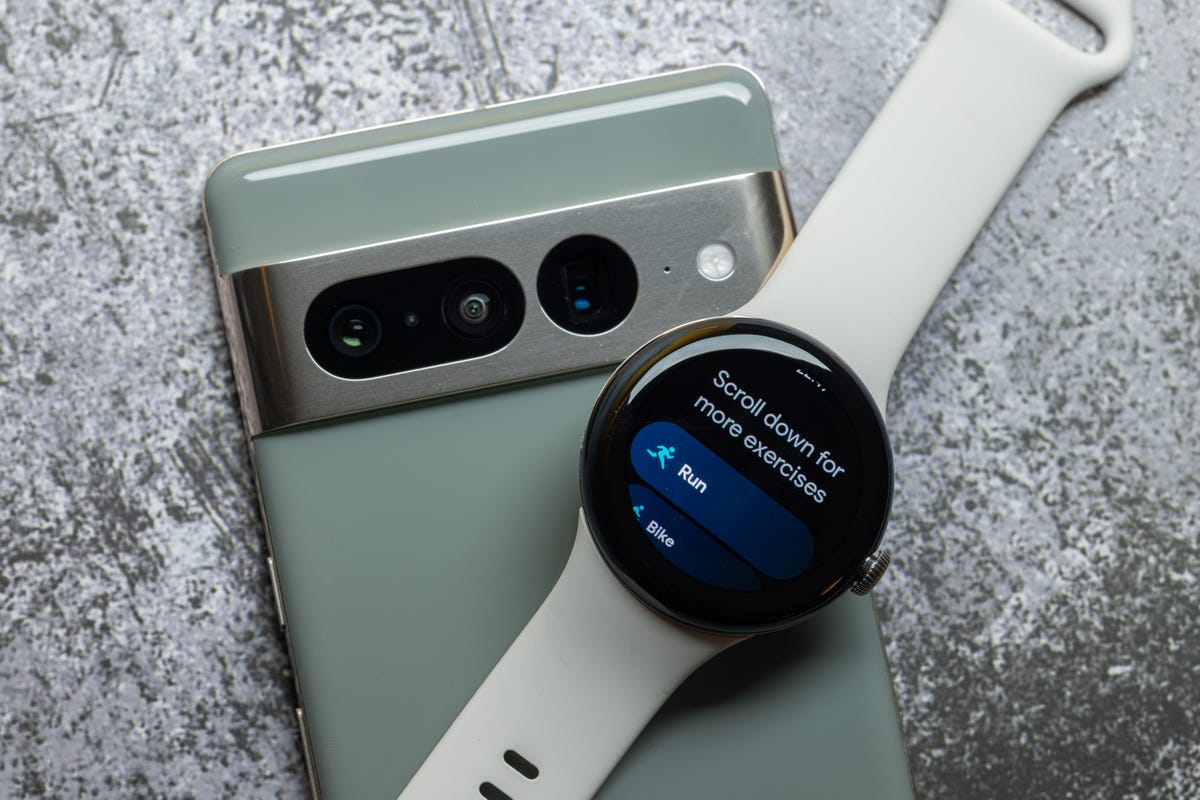

The Pixel Watch has been positioned as a Pixel phone companion, but it works great with other Android devices too.
Andrew Lanxon/CNETThat makes the Pixel Watch appealing to a broader audience of Android users, but also means there isn’t necessarily anything about it that hooks users into Google’s specific Pixel ecosystem. Samsung, on the other hand, restricts the Galaxy Watch’s ECG feature to Galaxy phone users only.
Unsurprisingly, the Pixel Watch is not compatible with iPhones. But other Wear OS watchmakers like Fossil offer iOS support.
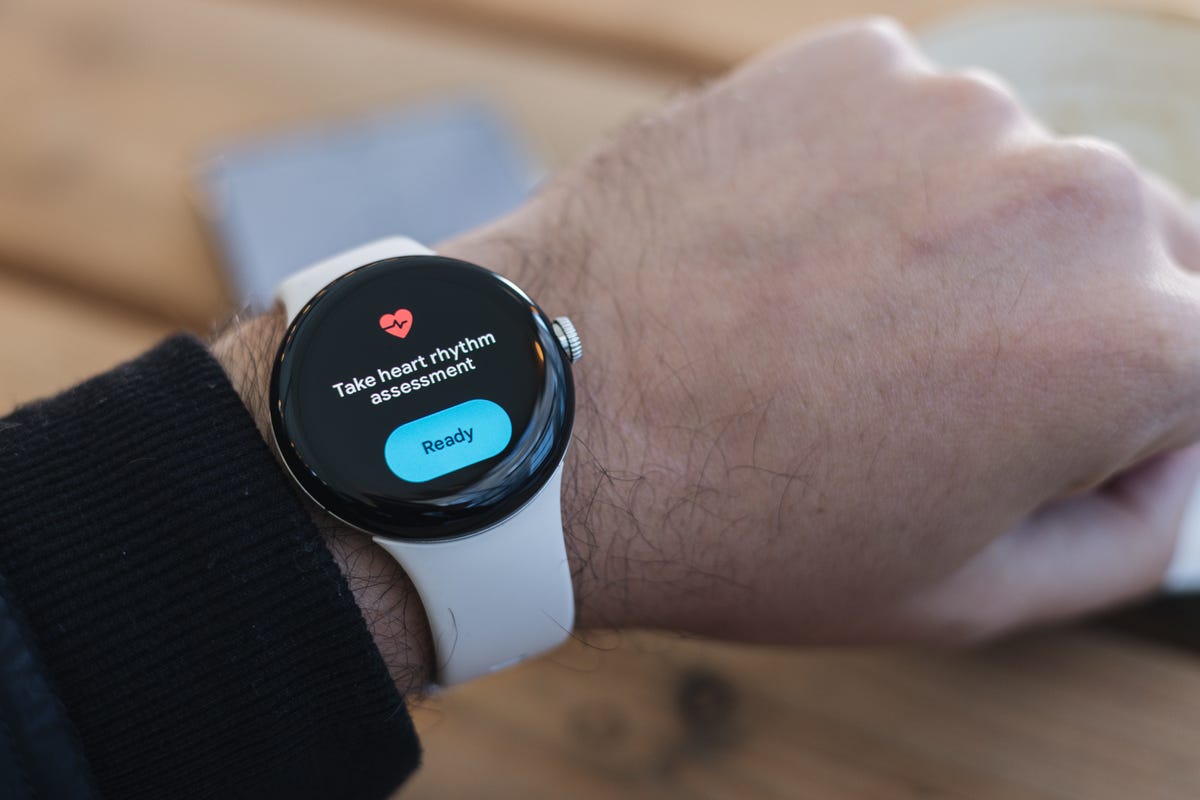

The same downsides still exist, possibly with some new ones
Aside from the battery life and the bezel, there are two shortcomings that might be important to those who regularly use their watch for health and fitness tracking.
First, the Pixel Watch can’t automatically detect and launch a workout while on your wrist or provide notifications for high and low heart rates. That may be important to consider for those who want to keep a closer eye on their cardiac health.
These are drawbacks that existed at launch, but some users have reported new issues since then. A few Pixel Watch owners have said that alarms set on the Pixel Watch have gone off minutes after they were supposed to, as 9to5Google has reported. For what it’s worth, I use the alarm function on the Pixel Watch often and have not experienced this problem. A Google spokesperson said the company will be updating the Pixel Watch’s Clock app through the Play Store in the coming weeks to address these alarm issues.
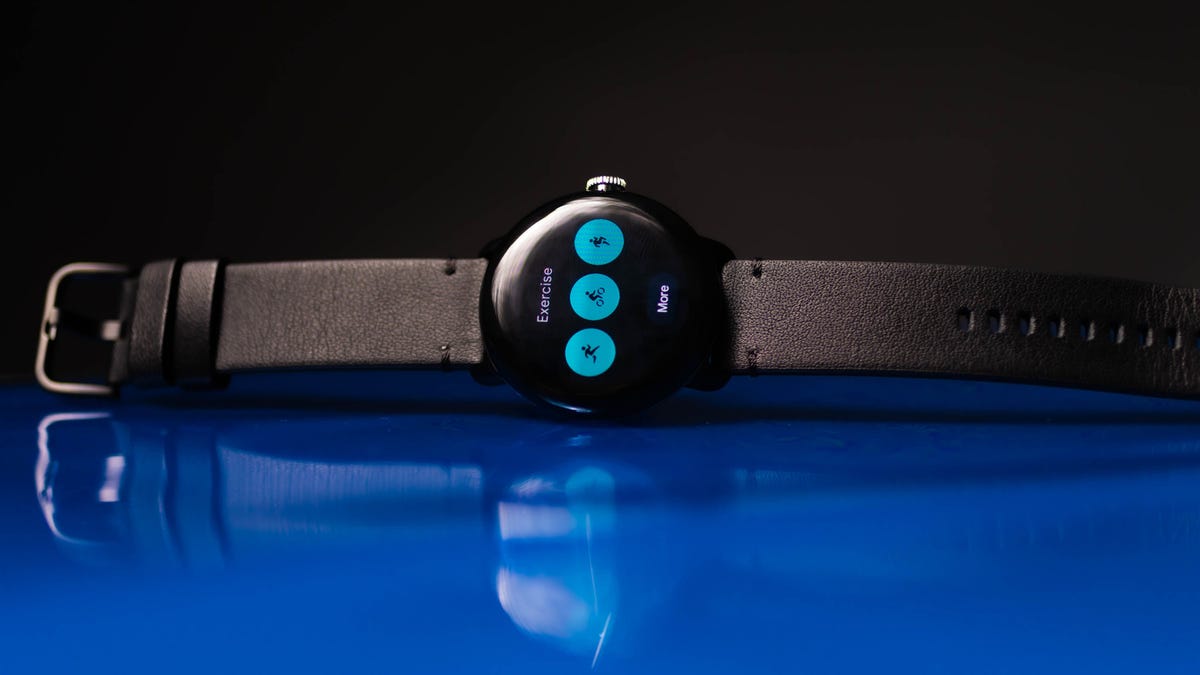

The Pixel Watch will evolve over time
But perhaps the biggest revelation that’s become clear over the last few months is that the Pixel Watch will continue to evolve over time, much like Google’s Pixel phones. Google has launched a couple of new features, like fall detection and Fitbit’s Sleep Profiles, the latter of which is available only for Fitbit Premium members and provides deeper analysis of your sleeping patterns. However, both features really just bring the Pixel Watch up to speed with other watches from Apple and Fitbit rather than introducing something wholly new.
The bigger takeaway is that companies like Google, Apple and Samsung are all finding new ways to bring compelling features to their respective smartwatches via software updates rather than just hardware. Apple’s WatchOS 9 update last fall, for example, brought better sleep tracking and more metrics for runners. Samsung, meanwhile, brought improved camera remote controls to the Galaxy Watch 5 and will soon launch cycle tracking.
The Pixel Watch’s classy design and Fitbit health tracking still make it a standout choice for Android device owners. It’s far from perfect, but I’m looking forward to seeing where Google takes it next.
Technologies
What a Ban Would Actually Mean for DJI Drone Owners and Holiday Shoppers
What’s the secret to a very un-merry shopping season? A brand new, unusable drone.
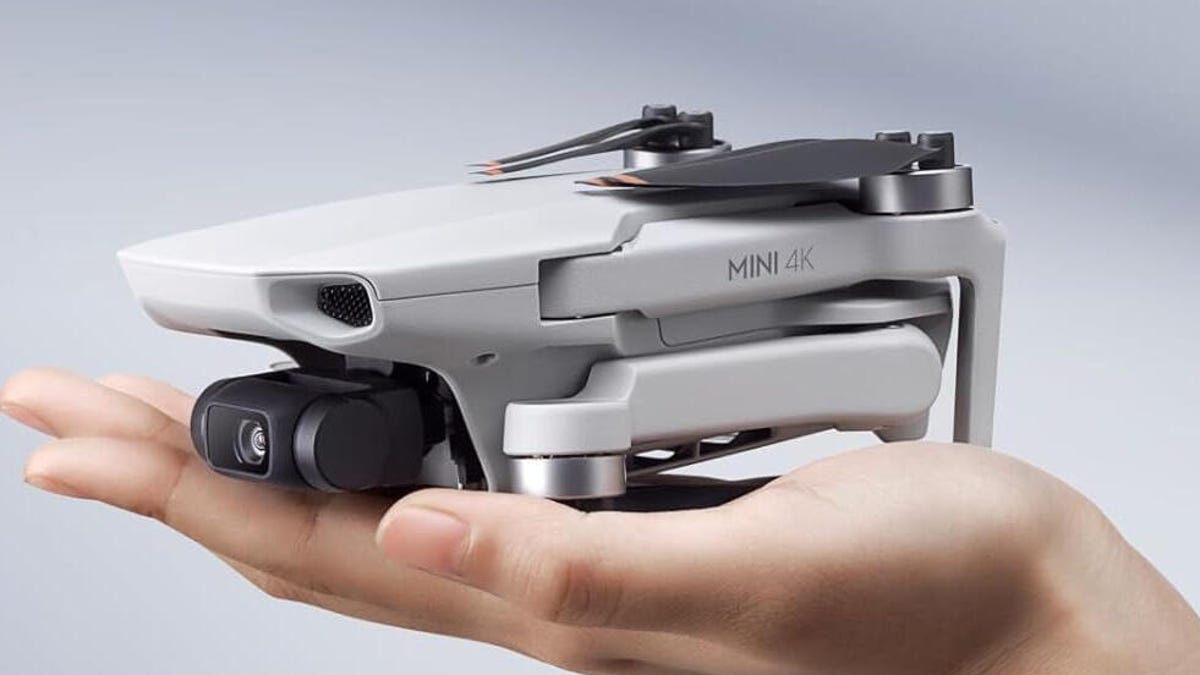
With Thanksgiving wrapped up and the Black Friday shopping sales here, if a DJI drone is on your holiday wish list, you might want to hit «buy» immediately. The company has issued a stark warning: Its drones could be banned from sale in the US, and the deadline is looming.
The Federal Communications Commission voted 3-0 at the end of October to «close loopholes» that allow tech deemed a «national security risk» to be sold in the US. In plain English, the US government is clearing the path to give DJI the same treatment it gave Chinese phone-maker Huawei, effectively banning its products from the American market.
The US government has deemed DJI, which is based in China, a security risk. It’s also considering a separate ban on TP-Link routers.
DJI is already sounding the alarm, posting on Instagram that a «deadline that could decide DJI’s fate in the US is just 43 days away» (now 19 days away). The company is warning that without an audit, its products could face an «automatic ban.» The US government has long labeled the Chinese drone maker a security risk, and it looks like the hammer might finally be coming down right before the holidays.
Don’t miss any of our unbiased tech content and lab-based reviews. Add CNET as a preferred Google source.
The vote isn’t the end of the road, however. Future bans would need to target specific products and would require a period of public consultation. But it appears the groundwork is being set for the FCC to block sales of future and some existing DJI drones from US shores, as well as products that use DJI technology.
The government has called for a DJI audit by the end of the year, but if that doesn’t happen, DJI drone products could be banned for sale by default under a national security law.
DJI asks for a security audit before any ban
A representative for DJI told CNET that while the FCC vote references a rule change that doesn’t currently apply to DJI specifically, the National Defense Authorization Act deadline in December would put Chinese companies like it on the FCC’s ban list, «without any evidence of wrongdoing or the right to appeal.»
Adam Welsh, head of global policy at DJI, said the company has repeatedly said it would be open to audit, but that «more than 10 months have now passed with no sign that the process has begun.»
«The US government has every right to strengthen national security measures, but this must go hand in hand with due process, fairness, and transparency,» Welsh said.
Welsh said DJI is urging the government to start the audit process or grant an extension.
Will DJI drone owners need to give them up?
Because the ban would apply to new sales, not drones that have already been sold, a DJI drone you already own would still be legal to use — at least under current rules.
Government agencies, however, are prohibited from purchasing or using drones from Chinese companies, including DJI.
DJI’s drones consistently rank high in their product category. In January, they dominated CNET’s list of best drones for 2025. But some of the company’s newest products, such as the DJI Mavic 4 Pro, haven’t been available for sale in the United States.
Even DJI products that are not yet banned may be hard to find. The website UAV Coach has posted a guide to the bans and reports that, due to inventory issues, most DJI drone models are sold out at retailers regardless of future FCC action.
Technologies
Today’s NYT Strands Hints, Answers and Help for Nov. 29 #636
Here are hints and answers for the NYT Strands puzzle for Nov. 29, No. 636.
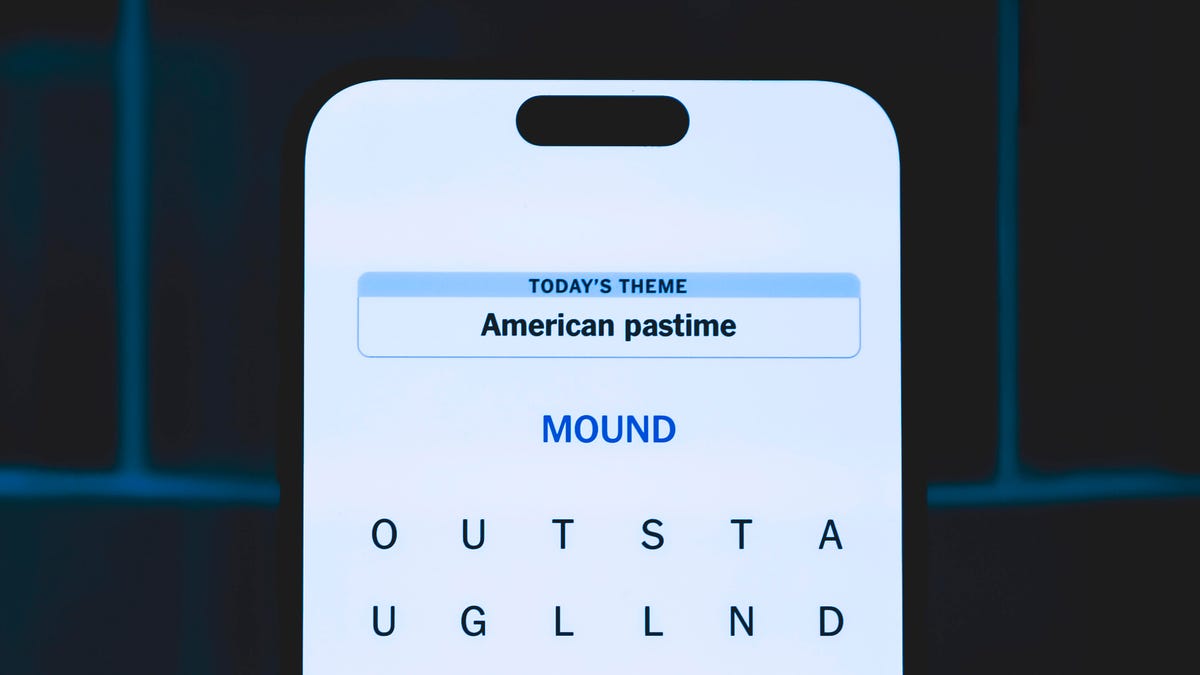
Looking for the most recent Strands answer? Click here for our daily Strands hints, as well as our daily answers and hints for The New York Times Mini Crossword, Wordle, Connections and Connections: Sports Edition puzzles.
Today’s NYT Strands puzzle is a real puzzler. Some of the answers are difficult to unscramble, so if you need hints and answers, read on.
I go into depth about the rules for Strands in this story.
If you’re looking for today’s Wordle, Connections and Mini Crossword answers, you can visit CNET’s NYT puzzle hints page.
Read more: NYT Connections Turns 1: These Are the 5 Toughest Puzzles So Far
Hint for today’s Strands puzzle
Today’s Strands theme is: What a piece of work!
If that doesn’t help you, here’s a clue: You can build it in a shop.
Clue words to unlock in-game hints
Your goal is to find hidden words that fit the puzzle’s theme. If you’re stuck, find any words you can. Every time you find three words of four letters or more, Strands will reveal one of the theme words. These are the words I used to get those hints but any words of four or more letters that you find will work:
- CREW, REAM, LANE, WHEE, DELL, CANE, PULL, REVEL
Answers for today’s Strands puzzle
These are the answers that tie into the theme. The goal of the puzzle is to find them all, including the spangram, a theme word that reaches from one side of the puzzle to the other. When you have all of them (I originally thought there were always eight but learned that the number can vary), every letter on the board will be used. Here are the nonspangram answers:
- WHEEL, AXLE, LEVER, WEDGE, PLANE, PULLEY, SCREW
Today’s Strands spangram
Today’s Strands spangram is SIMPLEMACHINE. To find it, start with the S that’s three letters to the right on the top row, and wind over and down.
Technologies
Today’s NYT Connections Hints, Answers and Help for Nov. 29, #902
Here are some hints and the answers for the NYT Connections puzzle for Nov. 29, #902.
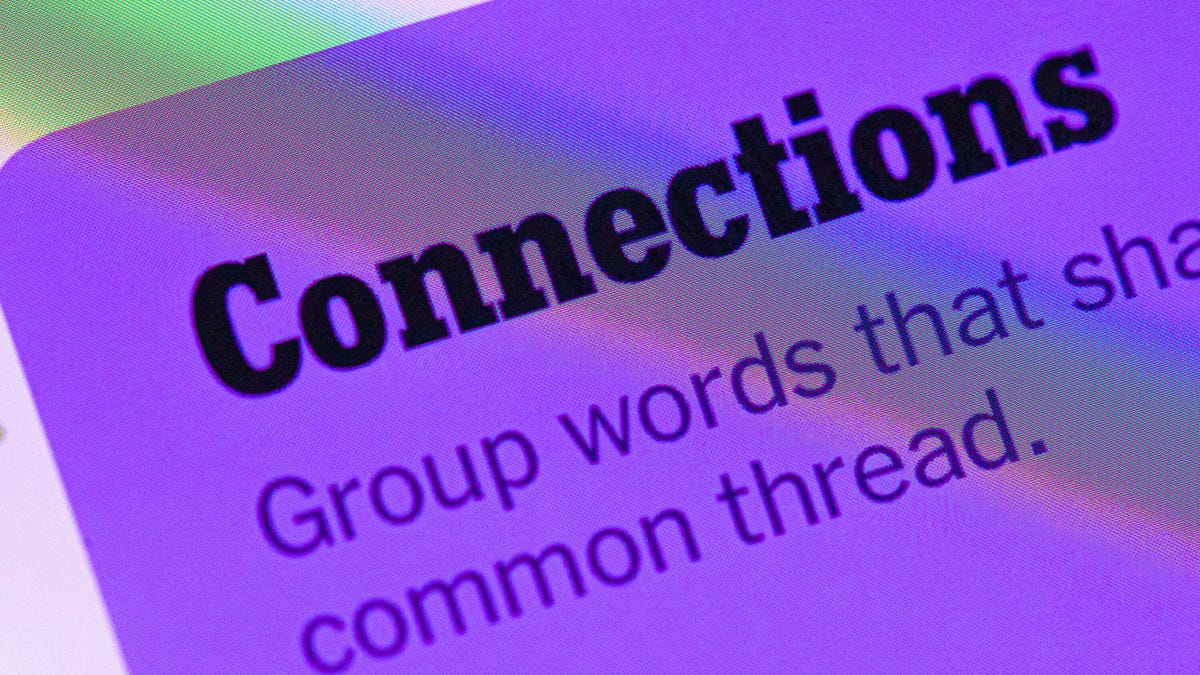
Looking for the most recent Connections answers? Click here for today’s Connections hints, as well as our daily answers and hints for The New York Times Mini Crossword, Wordle, Connections: Sports Edition and Strands puzzles.
Today’s NYT Connections puzzle is tough. If you need help sorting them into groups, you’re in the right place. Read on for clues and today’s Connections answers.
The Times now has a Connections Bot, like the one for Wordle. Go there after you play to receive a numeric score and to have the program analyze your answers. Players who are registered with the Times Games section can now nerd out by following their progress, including the number of puzzles completed, win rate, number of times they nabbed a perfect score and their win streak.
Read more: Hints, Tips and Strategies to Help You Win at NYT Connections Every Time
Hints for today’s Connections groups
Here are four hints for the groupings in today’s Connections puzzle, ranked from the easiest yellow group to the tough (and sometimes bizarre) purple group.
Yellow group hint: Middle of the body.
Green group hint: Fill-in.
Blue group hint: Nice place to hang out.
Purple group hint: Card game.
Answers for today’s Connections groups
Yellow group: Abdominal area.
Green group: Replacement.
Blue group: Park staples.
Purple group: Blackjack terms.
Read more: Wordle Cheat Sheet: Here Are the Most Popular Letters Used in English Words
What are today’s Connections answers?
The yellow words in today’s Connections
The theme is abdominal area. The four answers are core, midsection, torso and trunk.
The green words in today’s Connections
The theme is replacement. The four answers are backup, cover, relief and substitute.
The blue words in today’s Connections
The theme is park staples. The four answers are bench, pigeon, statue and tree.
The purple words in today’s Connections
The theme is blackjack terms. The four answers are bust, hit, split and stand.
-

 Technologies3 года ago
Technologies3 года agoTech Companies Need to Be Held Accountable for Security, Experts Say
-

 Technologies3 года ago
Technologies3 года agoBest Handheld Game Console in 2023
-

 Technologies3 года ago
Technologies3 года agoTighten Up Your VR Game With the Best Head Straps for Quest 2
-

 Technologies4 года ago
Technologies4 года agoBlack Friday 2021: The best deals on TVs, headphones, kitchenware, and more
-

 Technologies4 года ago
Technologies4 года agoVerum, Wickr and Threema: next generation secured messengers
-

 Technologies4 года ago
Technologies4 года agoGoogle to require vaccinations as Silicon Valley rethinks return-to-office policies
-

 Technologies4 года ago
Technologies4 года agoOlivia Harlan Dekker for Verum Messenger
-

 Technologies4 года ago
Technologies4 года agoiPhone 13 event: How to watch Apple’s big announcement tomorrow

